Advice and Information
Gastroscopy in Horses
By Dr Callum Macleod-Andrew, BSc BVSc MRCVS of Stride Equine Vets
Gastroscopy is a diagnostic procedure we use to examine the interior of a horse’s stomach and upper gastrointestinal tract. It is the gold standard for diagnosing Equine Gastric Ulcer Syndrome (EGUS) and other gastric abnormalities, such as erosions, inflammation, or growths in the stomach lining. It is even possible to spot parasitic larvae in the stomach.
Gastroscopy involves using a flexible endoscope with a light and camera to visualize the stomach’s mucosal surface and assess its health. This procedure provides invaluable insights into the severity, location, and type of ulcers or other gastrointestinal issues that might be affecting the horse.
Purpose of Gastroscopy
The primary goal of gastroscopy in horses is to diagnose and assess the following conditions:
- Equine Gastric Ulcer Syndrome (EGUS): Horses prone to ulcers (e.g., performance horses, those on high-grain diets, or under stress) can develop painful stomach ulcers. Gastroscopy allows veterinarians to confirm the presence and severity of these ulcers.
- Gastric Inflammation: Inflammation of the stomach lining (gastritis) can be detected, which might not be visible externally.
- Tumours or Masses: Gastroscopy helps identify growths such as tumours or polyps within the stomach or upper gastrointestinal tract.
- Foreign Bodies: In rare cases, objects swallowed by the horse may become lodged in the stomach, and gastroscopy can help identify and potentially remove them.
- Follow-up Care: After a treatment regimen for ulcers or other gastric conditions, gastroscopy may be used to monitor healing progress.
Procedure Overview
- Preparation:
- Fasting: Before gastroscopy, horses must fast to ensure the stomach is empty, allowing us to have a clear view of the stomach lining. Horses are typically fasted for 12-16 hours (food withheld) and water for 2 hours before the procedure.
- Sedation: The horse is sedated to keep it calm and still during the procedure. Sedation also minimises stress for the horse and reduces the risk of injury to both the horse and the vet.
- Insertion of the Endoscope:
- A long, flexible endoscope (typically 3 meters in length) is passed through the horse’s nostril, down the oesophagus, and into the stomach. This instrument is equipped with a light source and camera, so that we can observe the stomach in real-time on a monitor. The insertion process can sometimes be very time-consuming, as this step is dependent on the horse swallowing the endoscope into the oesophagus. In some cases, especially if heavily sedated, the horse may constantly chew with the jaw and fail to swallow for prolonged periods of time.
- Examination of the Stomach:
- We will inspect the various regions of the stomach, including the squamous (non-glandular) and glandular areas. These regions are examined for lesions, ulcers, erosion, or abnormal tissue. We may also assess the pyloric sphincter, the opening between the stomach and small intestine.
- If ulcers are present, their location, size, and severity are documented.
- Duration:
- The entire procedure typically lasts between 20-45 minutes, depending on the thoroughness of the examination and the ease with which the endoscope can be manoeuvred through the horse’s digestive tract.
Results and Diagnosis
The images obtained during gastroscopy provide an accurate visual representation of the horse’s gastric condition. Based on the findings, ulcers or other abnormalities can be classified by their severity and location, which helps guide treatment.
- Grading of Ulcers: Gastric ulcers are often graded on a scale defined by The Equine Gastric Ulcer Council, whose membership includes clinical specialists with a particular interest in this area of disease management:
- Grade 0: The epithelium is intact and there is no appearance of hyperaemia (reddening) or hyperkeratosis (yellow appearance to the squamous mucosa).
- Grade 1: The mucosa is intact, but there are areas of reddening or hyperkeratosis (squamous).
- Grade 2: Small, single or multifocal lesions.
- Grade 3: Large, single or multifocal lesions or extensive superficial lesions.
- Grade 4: Extensive lesions with areas of apparent deep ulceration.
- Location of Ulcers: The location of any ulcers can affect the diagnosis and treatment:
- Non-glandular: Ulcers in the cardiac of the stomach are generally less painful and require only Omeprazole if Grade 2 or less.
- Squamous region: Ulcers in this area are much more severe as they are constantly covered in stomach acid and require Sucralfate alongside Misoprostol.
- Pyloric sphincter: Ulcers around the pyloric sphincter are the most painful and hardest to treat as they are constantly covered in stomach acid but also subject to mechanical erosion from the muscular folds of the sphincter opening and closing.
Advantages of Gastroscopy
- Accurate Diagnosis: Gastroscopy provides a direct view of the stomach lining, making it the most reliable way to diagnose gastric ulcers, their severity, and any other abnormalities.
- Targeted Treatment: Once ulcers are identified and graded, we can prescribe appropriate treatments, such as proton pump inhibitors (e.g., omeprazole) or dietary changes to aid healing.
- Monitoring Progress: We usually recommend repeating the process to monitor healing and the effectiveness of treatments, ensuring ulcers are resolving as expected.
- Differential Diagnosis: It helps differentiate gastric ulcers from other conditions, such as tumours or foreign body ingestion, which may present similar symptoms.

Risks and Considerations
Gastroscopy is generally safe, but there are a few considerations to keep in mind:
- Sedation Risks: The horse must be sedated for the procedure, and as with any sedation, there is a small risk of adverse reactions, though these are uncommon.
- Discomfort: The insertion of the endoscope may cause mild discomfort, but this is minimised with sedation.
- Nose bleed – This is a common complication with a gastroscopy, and, although it may be alarming in some cases, almost all cases cease without any consequence to the horse.
Signs That a Horse May Need Gastroscopy
Gastroscopy is recommended if a horse shows any of the following signs, which may indicate gastric ulcers or other gastrointestinal issues:
- Chronic Poor Appetite: Reluctance to eat or leaving grain behind.
- Weight Loss: Unexplained weight loss despite adequate food intake. This may be particularly obvious in the muscles of the back (top-line) which may be noticed if the saddle starts to not fit correctly. Similarly, your horse may not be responding to a diet/exercise plan designed to ‘bulk up’ the muscles, and is instead struggling to gain weight.
- Colic-Like Behaviour: Recurrent mild colic, particularly after meals.
- Poor Performance: Decline in performance, resistance to being saddled, or reluctance to move forward under saddle.
- Behavioural Changes: Increased irritability, grumpiness, or sensitivity to grooming or touch.
- Dull Coat: A lack of coat shine or poor hair condition.
- Teeth Grinding (Bruxism): This can be a sign of gastric discomfort.
Conclusion
Gastroscopy is a highly valuable diagnostic tool for identifying gastric ulcers and other gastrointestinal issues in horses. Its accuracy helps us to make informed decisions about treatment and management, ensuring the horse can recover and maintain a high quality of life. Given its ability to provide direct visualisation of the stomach, gastroscopy is the gold standard for diagnosing and managing Equine Gastric Ulcer Syndrome and other stomach-related problems in horses.

Call to ask any question
01420 551 365
Equine Services
Your Trusted Equine Partner
Expert veterinary care for horses in Surrey, Hampshire and the surrounding areas.

